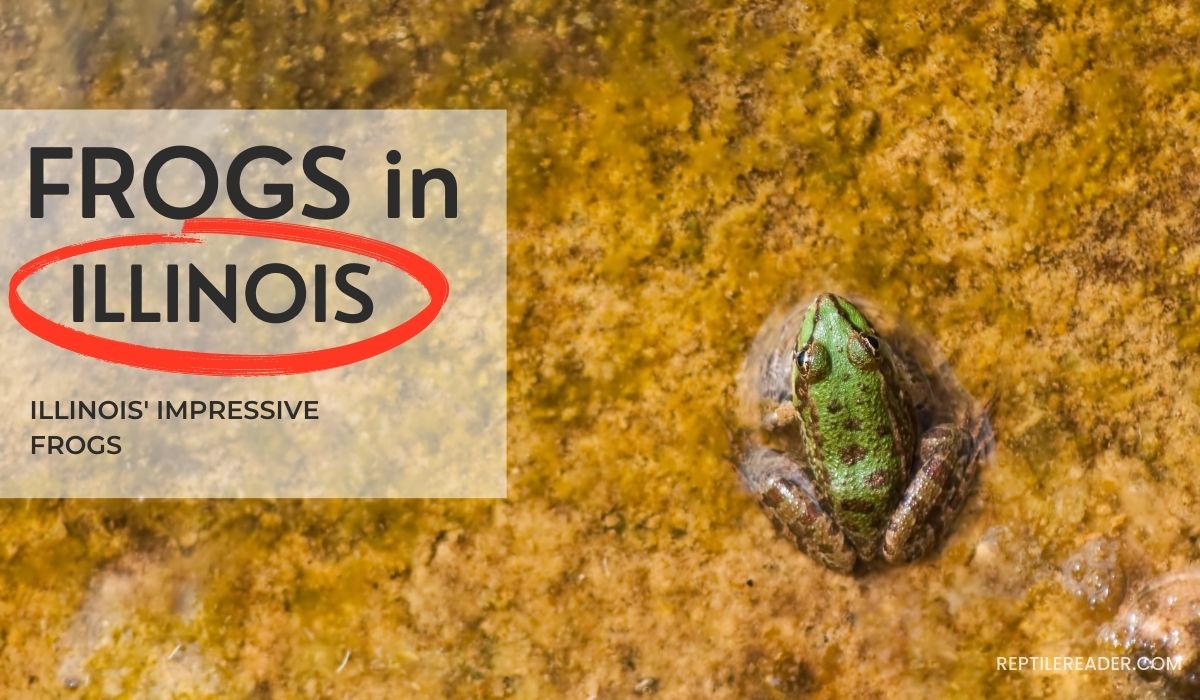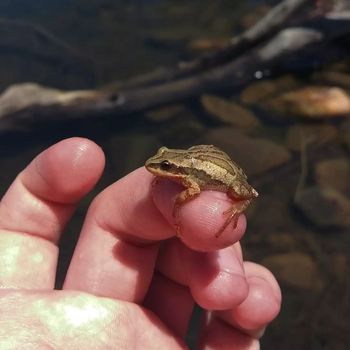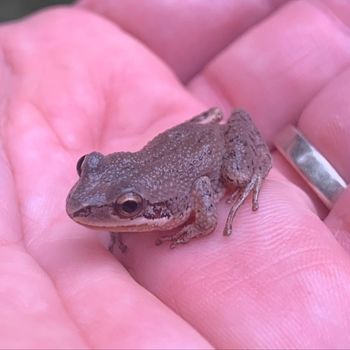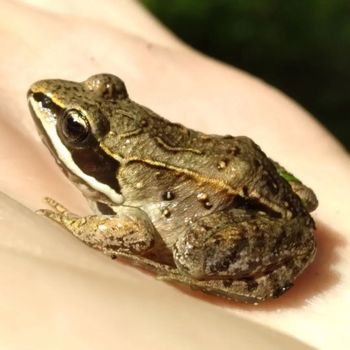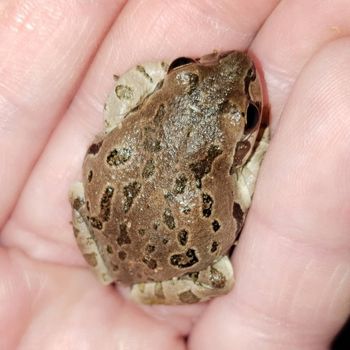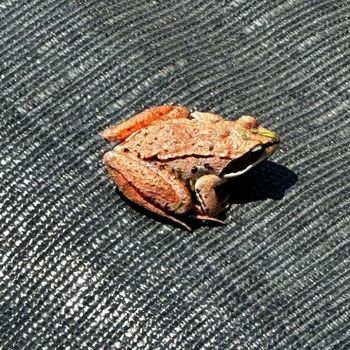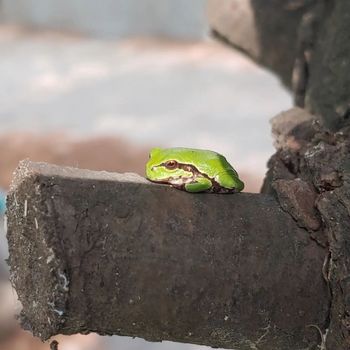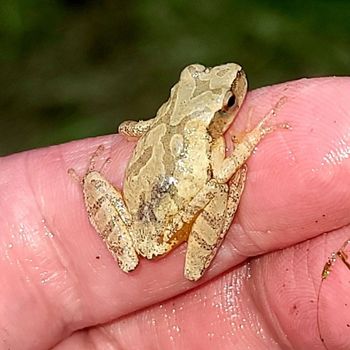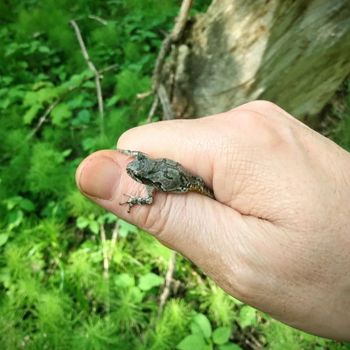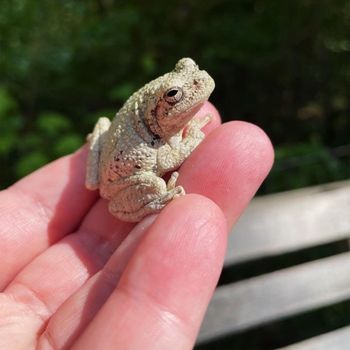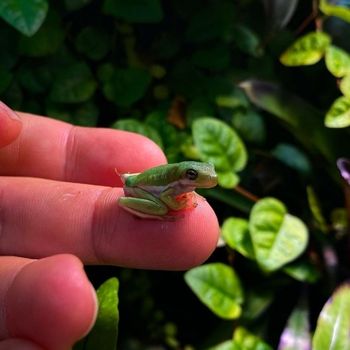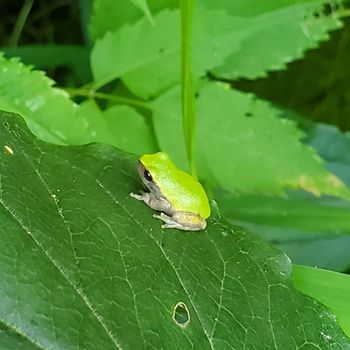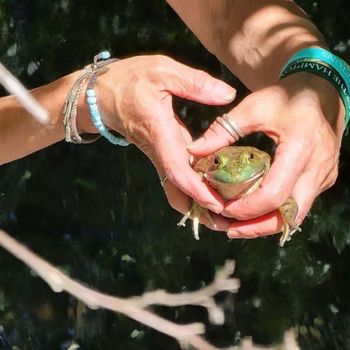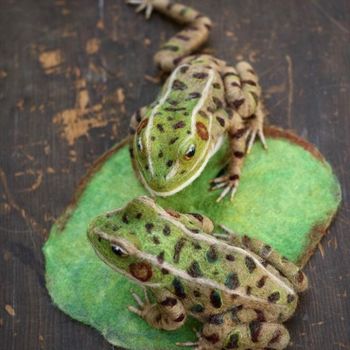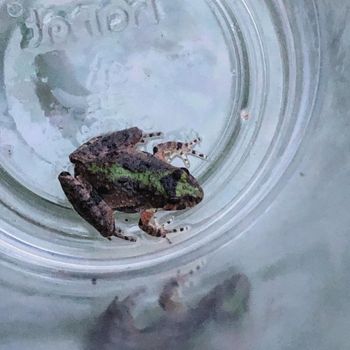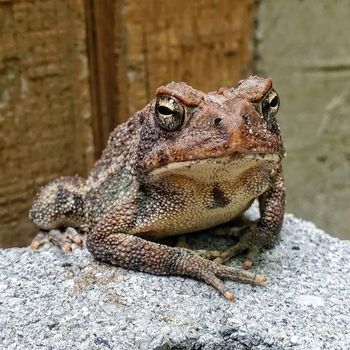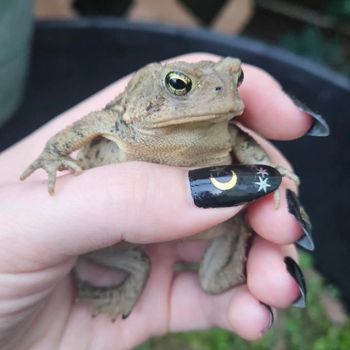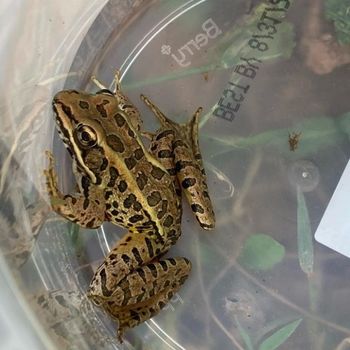Frogs in Illinois: Illinois’ Impressive Frogs
Have you ever wondered just how many different species of frogs call Illinois home? Well, let me tell you, you’re in for a treat. Illinois is home to a whopping 20 different species of these fascinating amphibians.
So, grab your rain boots and a trusty flashlight, because we’re about to embark on a froggy journey across the prairies, wetlands, and forests of the Land of Lincoln.
In this blog, we’ll introduce you to each of these unique species, highlighting their characteristics, habitats, and some fun facts along the way — get ready to leap into the world of Illinois frogs!
| # | Name | Details | Image |
| 1 | Western Chorus Frog (Pseudacris triseriata) |
| 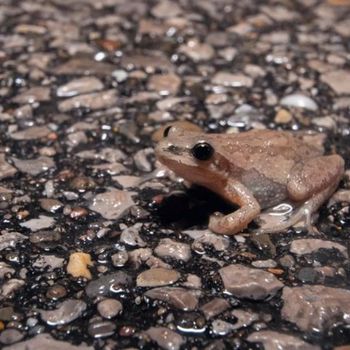 |
| 2 | Upland Chorus Frog (Pseudacris feriarum) |
| 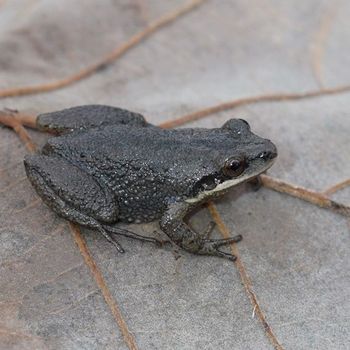 |
| 3 | Boreal Chorus Frog (Pseudacris maculata) |
| 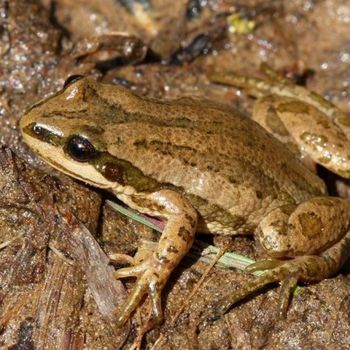 |
| 4 | Strecker’s Chorus Frog (Pseudacris streckeri) |
| 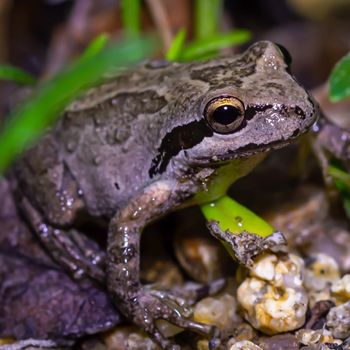 |
| 5 | Wood Frog (Rana sylvatica) |
| 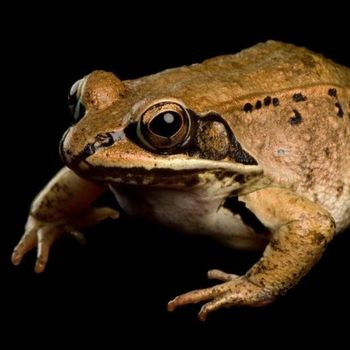 |
| 6 | Green Frog (Lithobates clamitans) |
| 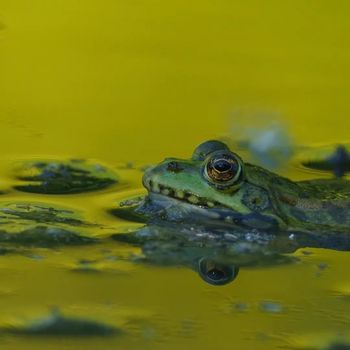 |
| 7 | Spring Peeper (Pseudacris crucifer) |
| 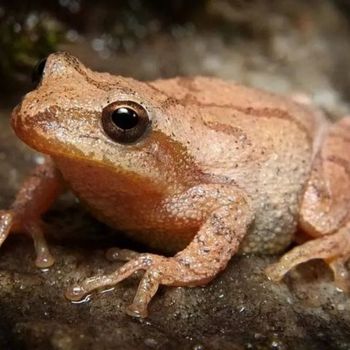 |
| 8 | Gray Tree Frog (Hyla versicolor) |
| 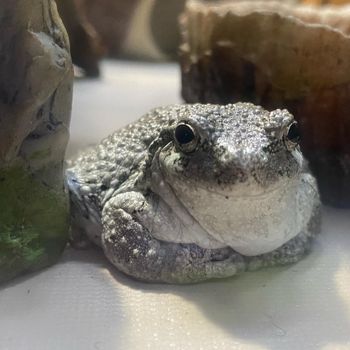 |
| 9 | Cope’s Gray Tree Frog (Hyla chrysoscelis) |
| 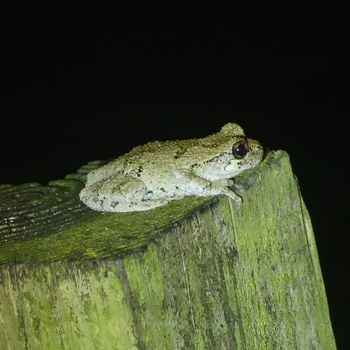 |
| 10 | American Green Tree Frog (Hyla cinerea) |
| 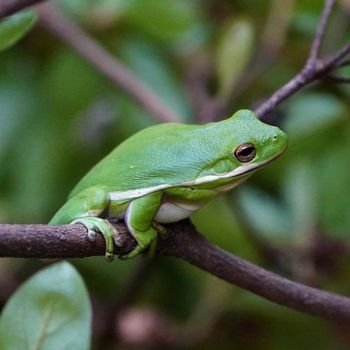 |
| 11 | Bird-voiced Tree Frog (Hyla avivoca) |
| 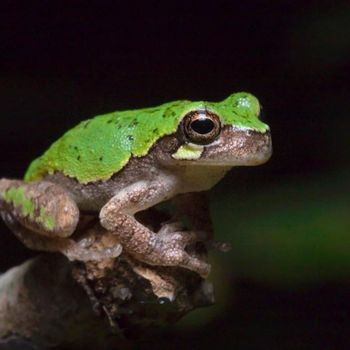 |
| 12 | Bullfrog (Rana catesbeiana) |
| 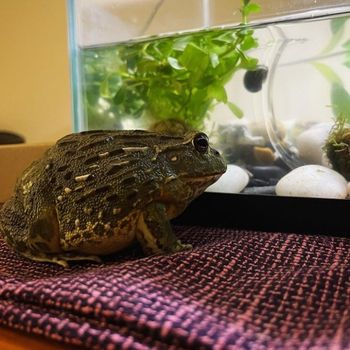 |
| 13 | Northern Leopard Frog (Rana pipiens) |
| 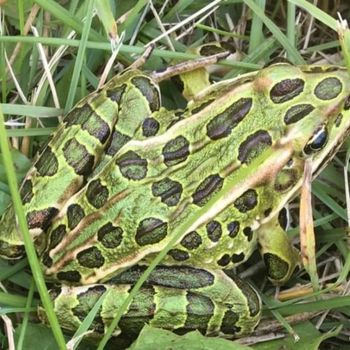 |
| 14 | Southern Leopard Frog (Lithobates sphenocephalus) |
| 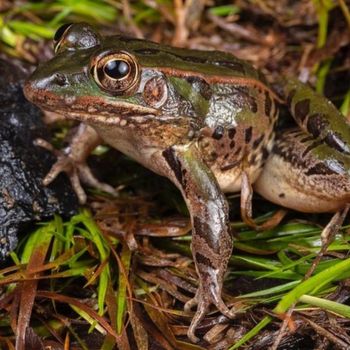 |
| 15 | Northern Cricket Frog (Acris crepitans) |
| 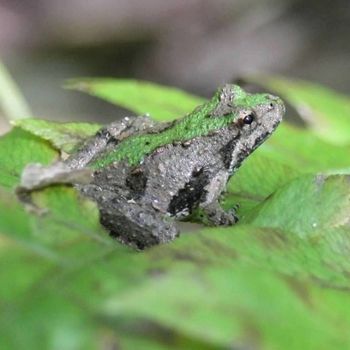 |
| 16 | Eastern Spadefoot Toad (Scaphiopus holbrookii) |
| 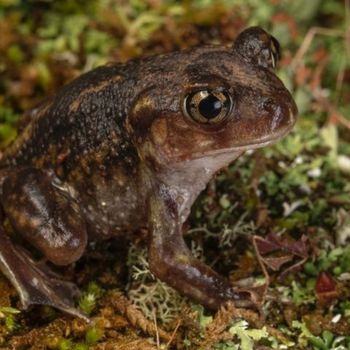 |
| 17 | Fowler’s Toad (Anaxyrus fowleri) |
| 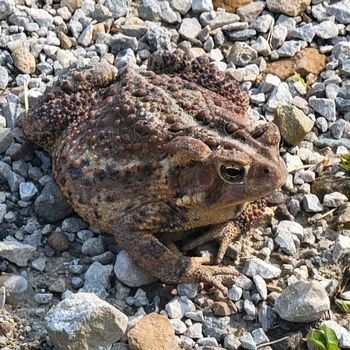 |
| 18 | American Toad (Anaxyrus americanus) |
|  |
| 19 | Eastern Narrow-mouthed Toad (Gastrophryne carolinensis) |
| 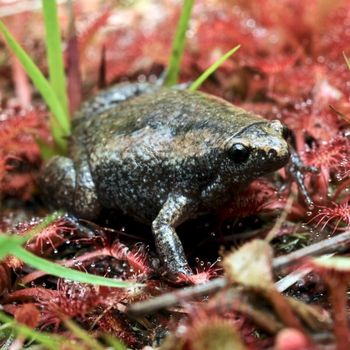 |
| 20 | Pickerel Frog (Lithobates palustris) |
| 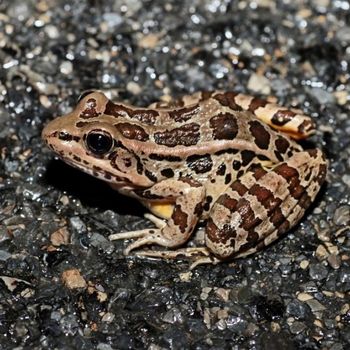 |
20 Frog Species You Can Find in Illinois
Get ready to dive deep into the lives of 20 incredible frog species that call Illinois their home, showcasing their unique adaptations and remarkable behaviors. From the loud, rhythmic croaks of the American Bullfrog to the vibrant colors of the Northern Leopard Frog, each species in Illinois has its own fascinating story to tell. Whether they’re blending seamlessly into their wetland surroundings or demonstrating their impressive jumping abilities, these amphibians are a vital part of the state’s ecosystem. Interestingly, some similarities can be drawn between these Illinois frogs and frogs in Pennsylvania, where similar species with distinctive behaviors also play a crucial role in their respective habitats.
1. Western Chorus Frog
- Scientific Name: Pseudacris triseriata
- Common Name: Western chorus frog
- Size: 0.7-1.5 inches (1.7-3.7 cm)
- Color & Pattern: Brown or gray with three dark lines on their back
- Natural Habitat: Grassy wetlands, meadows, urban environments
- Geographic Range: North america (canada to the central and eastern united states)
- Diet: Small invertebrates, such as insects and spiders
- Reproduction: Breeds in temporary ponds, lays eggs in gelatinous clusters
- Vocalization: Rapid, high-pitched “peep-peep” calls by males during breeding
- Adaptation: Natural antifreeze prevents tissue damage during hibernation
- Conservation Status: Least concern
Meet the tiny, unassuming Pseudacris triseriata, more commonly known as the Western Chorus Frog. Adorned in hues of brown or gray, these petite amphibians range from a mere 0.7-1.5 inches, with three striking dark lines adorning their backs. Making their homes across North America, from Canada to the Central and Eastern United States, they are often found in grassy wetlands, meadows, and even urban environments.
Adaptive and resourceful, the Western Chorus Frog feasts on a smorgasbord of small invertebrates including insects and spiders. When it’s time to reproduce, these frogs flock to temporary ponds, cleverly laying their gelatinous egg clusters to minimize vulnerability to predators. Males serenade potential mates with rapid, high-pitched “peep-peep” calls, ensuring the continuation of their species.
Miraculously, these little creatures that call Illinois their home possess a natural “antifreeze,” protecting their delicate tissues from damage during hibernation. Though classified as a species of “Least Concern,” the Western Chorus Frog’s fascinating adaptations and intriguing characteristics make it a delight to behold, a testament to the wonders of the natural world.
2. Upland Chorus Frog
- Scientific Name: Pseudacris feriarum
- Common Name: Upland chorus frog
- Size: 0.9-1.4 inches (2.3-3.5 cm)
- Color & Pattern: Green or brown with darker stripes or spots
- Natural Habitat: Woodlands, swamps, grasslands, marshes
- Geographic Range: Eastern united states (mississippi river valley to atlantic coast)
- Diet: Insects, spiders, small invertebrates
- Reproduction: Breeds in shallow freshwater habitats, lays eggs attached to vegetation
- Vocalization: Short, ascending trill by males during breeding
- Adaptation: Freeze-tolerant, can survive in temporary water bodies
- Conservation Status: Least concern
Measuring only 0.9-1.4 inches, these vibrant little creatures boast an array of green or brown hues adorned with darker stripes or spots, perfect for blending into their diverse habitats that range from woodlands to marshes across the Eastern United States.
These energetic jumpers have an appetite for insects, spiders, and other small invertebrates. When it comes to love, the Upland Chorus Frog exhibits true romanticism, as the males sing a short, ascending trill during breeding time in shallow freshwater habitats. Here, they lay their eggs attached to floating vegetation, creating a cozy cradle for their offspring.
Never backing down from a challenge, this frog’s adaptations are nothing short of remarkable. Their freeze-tolerant nature enables them to survive temporary water bodies, and they even have the intriguing ability to hybridize with other chorus frog species. With a conservation status of “Least Concern,” the Upland Chorus Frog remains a thriving and captivating member of the amphibian world.
3. Boreal Chorus Frog
- Scientific Name: Pseudacris maculata
- Common Name: Boreal chorus frog
- Size: 0.8-1.6 inches (2-4 cm)
- Color & Pattern: Gray, brown or green with dark stripes on the back and sides
- Natural Habitat: Marshes, grasslands, wet meadows
- Geographic Range: Northwestern united states and canada
- Diet: Small insects, spiders, and other invertebrates
- Reproduction: Breeds in shallow water, lays eggs attached to vegetation
- Vocalization: Series of ascending, short trills
- Adaptation: Able to change color for camouflage, strong climbers
- Conservation Status: Least concern
Hidden in the marshes, grasslands, and wet meadows of northwestern United States and Canada, the small creature with a big voice, the Boreal Chorus Frog, thrives. Although diminutive in size, measuring only 0.8-1.6 inches, their distinct colors and patterns of gray, brown, or green with dark stripes on the back and sides allow them to stand out in their environment. Pseudacris maculata, as they’re known in the scientific community, have an impressive ability to change their color for camouflage and are remarkable climbers.
Surviving primarily on small insects, spiders, and other invertebrates, these talented amphibians lay their eggs attached to vegetation in shallow water, filling the surrounding area with a series of ascending, short trills to establish their presence. Fascinatingly, these frogs have developed concentrated antifreeze proteins that allow them to endure freezing temperatures – a vital adaptation in their often chilly habitat.
Fortunately, the conservation status of this Illinois resident is deemed the least concern due to their versatile adaptations and stable population, ensuring these interesting creatures remain an essential part of their ecosystem.
4. Strecker’s Chorus Frog
- Scientific Name: Pseudacris streckeri
- Common Name: Strecker’s chorus frog
- Size: 1-2 inches (2.5-5 cm)
- Color & Pattern: Brown or gray with dark spots and a white belly
- Natural Habitat: Marshes, wetlands, prairies
- Geographic Range: South-central united states (kansas to texas)
- Diet: Insects, spiders, small invertebrates
- Reproduction: Breeds in temporary pools, lays eggs in small clusters
- Vocalization: Trilling call by males during breeding
- Adaptation: Can tolerate cooler temperatures, cryptic coloration for camouflage
- Conservation Status: Least concern
Residing in marshes, wetlands, and prairies, this musical virtuoso boasts a modest size of 1-2 inches, cloaked in an earthy armor of brown or grey hues, embellished with dark spots and a harmonious white belly, perfect for camouflaging within its lush environment.
Hailing from the south-central United States (Kansas to Texas), Strecker’s Chorus Frog has adapted itself to thrive in cooler temperatures. Its diet is a carnivorous concoction of insects, spiders, and small invertebrates. This gifted crooner has a unique approach to reproduction; it serenades its mate within temporary pools, laying their offspring in small clusters as if composing a symphony of new life.
The Strecker’s Chorus Frog is a night owl, with most activity occurring under the cover of darkness. Its conservation status is labeled Least Concern, as its population remains relatively stable. This fascinating creature delivers a captivating auditory experience to its listeners whilst maintaining a perfect balance within nature’s symphony.
5. Wood Frog
- Scientific Name: Rana sylvatica
- Common Name: Wood frog
- Size: 1.4-3.7 inches (3.5-7.6 cm)
- Color & Pattern: Tan or brown with dark mask around eyes and back leg stripe
- Natural Habitat: Woodlands, bogs, swamps
- Geographic Range: North america, from alaska to new england, and south to northern georgia
- Diet: Insects, spiders, worms, slugs, snails
- Reproduction: Breeds in freshwater habitats, lays eggs in clusters attached to vegetation
- Vocalization: Males make a duck-like quacking sound during breeding
- Adaptation: Ability to freeze and thaw as a means to survive cold conditions
- Conservation Status: Least concern
Meet the captivating Rana sylvatica, commonly known as the Wood Frog, a forest-dwelling amphibian with an exquisite flair for blending into its surroundings. Sporting a fashionable tan or brown, adorned with a dark mask around its eyes, and a sleek stripe on its back legs, this petite creature ranges from 1.4-3.7 inches in size (3.5-7.6 cm). Its range spans North America, from the bustling wilds of Alaska to New England, with southern settlers in northern Georgia.
A gourmand of small delicacies, the Wood Frog feasts on a varied menu consisting of insects, spiders, worms, slugs, and snails. Its breeding rituals take place in the serene freshwater habitats it calls home, laying its precious eggs in clusters that find attachment on submerged vegetation. The debonair males serenade potential mates with duck-like quacking during these amorous encounters.
The true pièce de résistance of this incredible species is their unparalleled ability to freeze and thaw, permitting survival in harsh, cold conditions. Amidst this extraordinary talent, the Wood Frog is not considered at risk with a conservation status deemed of least concern. The fascinating life of the Wood Frog unfolds with eggs hatching within mere weeks, showcasing their resilient nature and true wonder.
6. Green Frog
- Scientific Name: Lithobates clamitans
- Common Name: Green frog
- Size: 2.3-3.5 inches (5.8-8.9 cm)
- Color & Pattern: Dark green or olive green with small dark spots
- Natural Habitat: Ponds, marshes, lakeshores, slow-moving streams
- Geographic Range: Eastern united states and canada
- Diet: Aquatic insects, snails, crustaceans, small fishes
- Reproduction: Breeds in shallow freshwater habitats, lays eggs in clusters
- Vocalization: Deep, bass-like calls by males during breeding
- Adaptation: Highly aquatic, powerful hind legs for jumping and swimming
- Conservation Status: Least concern
Behold the vibrant Lithobates clamitans, better known to us earthlings as the Green Frog! Its striking, dark green or olive green hue, accented by tiny spots, easily captivates the eye – a stunning inhabitant of the ponds, marshes, lakeshores, and slow-moving streams across Eastern United States and Canada. This exquisite amphibian masters the art of camouflage with a size ranging from 2.3 to 3.5 inches (5.8-8.9cm).
As a natural-born gourmet, the Green Frog feasts on a delectable menu of aquatic insects, snails, crustaceans, and small fishes. Cunning and creative, it seeks out shallow freshwater habitats for breeding, laying clusters of eggs as a part of its ingenious reproduction cycle. And, oh, how they serenade! The males’ deep bass-like calls enchant during the breeding season, as their bright yellow vocal sacs visually delight.
Frogs that are designed to jump and swim with their powerful hind legs, these phenomenal creatures are highly aquatic by nature. Perhaps the most fascinating facts linger in their ability to magically regenerate lost limbs, forming an extraordinary evolutionary edge. Fear not for their future, as they are classified with a conservation status of “Least Concern.” Our enchanting Green Frog will continue to leap and swim, astonishing us for years to come.
7. Spring Peeper
- Scientific Name: Pseudacris crucifer
- Common Name: Spring peeper
- Size: 0.75-1.5 inches (1.9-3.8 cm)
- Color & Pattern: Brown or green with an x-shaped mark on the back
- Natural Habitat: Woodlands, swamps, marshes
- Geographic Range: Eastern north america (canada to the southeastern united states)
- Diet: Insects, spiders, small invertebrates
- Reproduction: Breeds in freshwater habitats, lays eggs attached to vegetation
- Vocalization: High-pitched peeping call by males during breeding
- Adaptation: Freeze tolerance, nocturnal, adhesive toe pads for climbing
- Conservation Status: Least concern
Their intriguing brown or green skin is adorned with an X-shaped mark on their back, making them a small, nocturnal, woodland wonder. Inhabitants of woodlands, swamps, and marshes, these captivating creatures can be found all over Eastern North America, from Canada down to the southeastern United States.
Feasting on a diet of insects, spiders, and small invertebrates, these little frogs expertly navigate their environment using their adaptive toe pads for climbing. With harmonious high-pitched peeps, male Spring Peepers beckon their mates dutifully during the breeding season. Upon finding the perfect freshwater haven, these frogs lay their eggs attached to vegetation, continuing the cycle of life.
A true testament to nature’s resilience, Spring Peepers boast incredible freeze tolerance that allows them to survive temperatures up to -8°C (18°F). Although their conservation status remains listed as “Least Concern,” their enchanting presence serves as a reminder of nature’s awe-inspiring, adaptable beauty.
8. Gray Tree Frog
- Scientific Name: Hyla versicolor
- Common Name: Gray tree frog
- Size: 1.1-2 inches (3-5 cm)
- Color & Pattern: Gray, brown, or green with irregular markings, white spots under eyes
- Natural Habitat: Deciduous forests, shrubby areas, swamps, meadows
- Geographic Range: Eastern north america (canada to texas)
- Diet: Insects, spiders, small invertebrates
- Reproduction: Breeds in temporary and permanent freshwater habitats, lays eggs on floating plants
- Vocalization: Males produce musical trills during breeding
- Adaptation: Ability to change color, sticky toe pads for climbing
- Conservation Status: Least concern
Hidden within the deciduous forests, swamps, and meadows of eastern North America lies the elusive Hyla versicolor, a remarkably adaptable frog commonly known as the Gray Tree Frog. Gracefully climbing through their habitats with their sticky toe pads, these frogs exhibit an artistic mastery of disguise, changing from gray to brown or green, adorned with irregular markings and mysterious white spots concealing their bright eyes.
Spanning a petite 1.1-2 inches in size, Gray Tree Frogs feast daintily on insects, spiders, and small invertebrates. When it’s time to reproduce, they seek out temporary and permanent freshwater habitats, laying their precious eggs on floating plants. As males serenade their partners with musical trills, their unique adaptations ensure their survival amongst both the branches and the underbrush.
Braving harsh winters and freeze-tolerant, these adaptable creatures prove that beauty and nature’s artistry flourish even in the depths of adversity. Their skill and resilience has thankfully kept them far from the brink of extinction, a delightful testament to the magnificent wonders of the natural world.
9. Cope’s Gray Tree Frog
- Scientific Name: Hyla chrysoscelis
- Common Name: Cope’s gray tree frog
- Size: 1.0-2.0 inches (2.5-5.1 cm)
- Color & Pattern: Gray, green or brown with darker spots or patches, white underside
- Natural Habitat: Forests, swamps, wooded areas
- Geographic Range: Eastern united states and southeastern canada
- Diet: Insects, spiders, small invertebrates
- Reproduction: Breeds in freshwater habitats, lays eggs on water surface
- Vocalization: Short, rapid trills by males during breeding season
- Adaptation: Ability to change color, cling to surfaces, freeze-tolerance
- Conservation Status: Least concern
Perched high among the trees in the eastern United States and southeastern Canada, the enchanting Cope’s Gray Tree Frog thrives (Hyla chrysoscelis). With a petite frame of 1.0-2.0 inches (2.5-5.1cm), this shy creature can blend seamlessly into its surroundings, changing colors from gray, green, or brown with darker accents, while sporting a pristine white underside.
Feasting on insects, spiders, and other small invertebrates, the Cope’s Gray Tree Frog builds its life amid dense forests, swamps, and other wooded areas. As for reproduction, they embrace their love affair with water, breeding in freshwater habitats and laying their eggs on the surfaces of various bodies of water. This delicate creature takes part in a melodious symphony, with males contributing short, rapid trills during the breeding season.
Possessing an array of astounding adaptations, these frogs residing in Illinois can not only change color, but also cling to surfaces with ease and display an exceptional freeze-tolerance. In fact, they are known to survive even when partially frozen. With a conservation status of “least concern,” the enigmatic Cope’s Gray Tree Frog perseveres, occasionally venturing to the ground, but more often gracing the treetops with its whimsical charm.
10. American Green Tree Frog
- Scientific Name: Hyla cinerea
- Common Name: American green tree frog
- Size: 1.5-2.5 inches (3.8-6.4 cm)
- Color & Pattern: Bright green or yellow-green with small gold or white spots
- Natural Habitat: Wetlands, swamps, forests near water sources
- Geographic Range: Southeastern united states
- Diet: Insects, especially small ones such as crickets and flies
- Reproduction: Breeds in water, laying eggs in clumps on surface or attached to vegetation
- Vocalization: Males emit a short, nasal, repeated bark call
- Adaptation: Large adhesive toe pads for climbing, ability to change color slightly for camouflage
- Conservation Status: Least concern
Meet the charming Hyla cinerea, better known as the American Green Tree Frog. This dainty amphibian boasts a size of 1.5-2.5 inches (3.8-6.4 cm), with a vivid coat of bright green or yellow-green sprinkled with tiny gold or white spots. The frogs hail from the swampy, forested wetlands of the southeastern United States where they spend the night chasing after their favorite prey – insects, particularly small ones like crickets and flies.
These tiny hoppers reproduce in aquatic habitats, depositing clumps of eggs onto the water surface or attaching them to nearby vegetation. During mating season, the alluring males serenade prospective partners with a short, nasal, and repetitive bark-like call. This nocturnal species has an intriguing tolerance for human presence, often congregating around porch lights for an insect feast.
What truly sets the American Green Tree Frog apart is their large, adhesive toe pads that allow them to deftly climb various surfaces. Also, they have the ability to change colors slightly, providing clever camouflage in their lush environment. Fortunately, their conservation status is classified as ‘Least Concern’, ensuring that these fascinating frogs will continue to enchant the world with their unique characteristics.
11. Bird-voiced Tree Frog
- Scientific Name: Hyla avivoca
- Common Name: Bird-voiced tree frog
- Size: 1.25-2 inches (3.2-5.1 cm)
- Color & Pattern: Gray, green, or brown with darker markings, pale or white belly
- Natural Habitat: Forests near streams, swamps, and marshes
- Geographic Range: Southeastern united states
- Diet: Insects, spiders, small invertebrates
- Reproduction: Breeds in freshwater habitats, lays up to 900 eggs on the water’s surface
- Vocalization: High-pitched, bird-like call by males during breeding
- Adaptation: Camouflage, sticky toe pads to climb trees, retractable vocal sac
- Conservation Status: Least concern
Introducing the captivating Bird-voiced Tree Frog, known scientifically as Hyla avivoca. With a petite size, ranging from a mere 1.25-2 inches (3.2-5.1 cm), this tiny amphibian is awash in shades of gray, green, or brown, showcasing darker markings and a soft, pale belly. Their keen survival instincts lead them to inhabit the dense forests close to streams, swamps, and marshes in the southeastern United States.
These nocturnal creatures have a knack for catching insects, spiders, insects, and small invertebrates. When nighttime falls, the Bird-voiced Tree Frog is ready to feast! During breeding season, these frogs can be heard emitting high-pitched, bird-like calls as they search for mates. Mating culminates in the laying of up to 900 eggs on the water’s surface, ensuring the continuation of their fascinating species.
Expertly camouflaged, the Bird-voiced Tree Frog changes colors to match its surroundings, making it almost invisible to predators. Their sticky toe pads aid in climbing trees where they can retreat to safety. Moreover, males boast a retractable vocal sac for their enchanting mating calls. Despite their elusive nature, they are classified as “Least Concern” on the conservation status, thriving in their natural habitats.
12. Bullfrog
- Scientific Name: Rana catesbeiana
- Common Name: Bullfrog
- Size: 3.5-6 inches (9-15 cm)
- Color & Pattern: Green or greenish-brown with darker spots
- Natural Habitat: Freshwater habitats like ponds, lakes, and marshes
- Geographic Range: Eastern north america (canada to mexico), introduced worldwide
- Diet: Frogs, fish, small mammals, birds, insects
- Reproduction: Breeds in freshwater habitats, lays egg masses on the water’s surface
- Vocalization: Deep bass or guttural rumble by males during breeding
- Adaptation: Powerful legs for jumping and swimming, highly adept at camouflage
- Conservation Status: Least concern
Introducing the impressive Rana catesbeiana, commonly known as the Bullfrog. This marvelous creature can grow up to 6 inches (15 cm) in size and boasts a striking green or greenish-brown coloration adorned with darker spots. A master of camouflage, the Bullfrog thrives in freshwater habitats like ponds, lakes, and marshes across Eastern North America, from Canada to Mexico, and has even been introduced worldwide.
Relentlessly voracious, the Bullfrog’s diet consists of frogs, fish, small mammals, birds, and insects, and it is capable of consuming prey nearly half its size. As a magnificent swimmer and jumper, its powerful legs serve both in hunting and evading predators. When it comes time to reproduce, the Bullfrog breeds in its freshwater habitat, with the females laying egg masses delicately atop the water’s surface.
Male Bullfrogs serenade their potential mates with a deep bass or guttural rumble during breeding season, adding to their mystique. These fascinating amphibians not only have a talent for survival but may also live up to an astonishing ten years. Presently, their conservation status is of least concern, ensuring that the intriguing story of the Bullfrog will endure for generations to come.
13. Northern Leopard Frog
- Scientific Name: Rana pipiens
- Common Name: Northern leopard frog
- Size: 2.0-4.3 inches (5.1-11 cm)
- Color & Pattern: Green or brown with dark spots circled by a lighter border
- Natural Habitat: Marshes, swamps, grasslands, wetlands
- Geographic Range: Canada and the united states (alaska to new mexico)
- Diet: Insects, spiders, small crustaceans, other invertebrates
- Reproduction: Breeds in shallow, well-vegetated freshwater habitats, lay eggs in clusters attached to vegetation
- Vocalization: Snore-like call by males during breeding
- Adaptation: Long, powerful legs for jumping, partially webbed hind feet for swimming
- Conservation Status: Least concern
These captivating creatures are perfectly suited for life in marshes, swamps, grasslands, and wetlands, stretching from Alaska to New Mexico in North America. Their partially webbed hind feet allow them to swim gracefully, while their long, powerful legs support impressive jumping abilities.
With a main diet of insects, spiders, small crustaceans, and other invertebrates, these voracious eaters keep their habitats in Illinois lively. During breeding season, these frogs settle in shallow, well-vegetated freshwater habitats, and females lay eggs in clusters attached to vegetation. To attract a mate, male frogs serenade their companions with a unique, snore-like vocalization.
Remarkably, the Northern Leopard Frog is capable of surviving being frozen, an unparalleled adaptation contributing to their classification as “Least Concern” in conservation statuses. However, it is worth noting that habitat loss may lead to a decline in future populations. Overall, these fascinating frogs continue to enchant us with their beauty, resilient nature, and captivating behaviors.
14. Southern Leopard Frog
- Scientific Name: Lithobates sphenocephalus
- Common Name: Southern leopard frog
- Size: 2-3.5 inches (5-9 cm)
- Color & Pattern: Green or brown with dark, round spots and light borders
- Natural Habitat: Marshes, swamps, rivers, agricultural areas
- Geographic Range: Southeastern united states
- Diet: Insects, spiders, small crustaceans, other invertebrates
- Reproduction: Breeds in shallow freshwater habitats, lays eggs in masses
- Vocalization: Low-pitched chuckle or snore-like call by males during breeding
- Adaptation: Powerful legs for jumping, ability to tolerate colder temperatures
- Conservation Status: Least concern
This charming creature displays a captivating green or brown complexion adorned with dark, round spots and light borders. At a petite size of 2-3.5 inches (5-9 cm), they make their homes in marshes, swamps, rivers, and even agricultural areas throughout the southeastern United States.
These curious amphibians have a hearty appetite, indulging in insects, spiders, small crustaceans, and other invertebrates. To expand their family, they breed in shallow freshwater habitats, laying their eggs in mesmerizing masses. You may even hear their low-pitched chuckle or snore-like call emanating from the males as they partake in their breeding rituals.
The Southern Leopard Frog is an agile and adaptable species, boasting powerful legs for jumping and the ability to tolerate colder temperatures. Amazingly, they can even breathe through their skin while hibernating underwater. Currently, these splendid creatures have a conservation status of least concern, but let’s not forget their unique features and crucial role within their ecosystems.
15. Northern Cricket Frog
- Scientific Name: Acris crepitans
- Common Name: Northern cricket frog
- Size: 0.6-1.5 inches (1.5-3.8 cm)
- Color & Pattern: Brown or green with dark spots or bands
- Natural Habitat: Shallow, permanent waters with vegetation
- Geographic Range: Eastern united states (minnesota to texas)
- Diet: Insects, spiders, small invertebrates
- Reproduction: Breeds in shallow waters, eggs attached to plants
- Vocalization: Distict chirping or clicking calls made by males during breeding season
- Adaptation: Powerful legs for jumping, freeze tolerance
- Conservation Status: Least concern
These tiny amphibians, ranging from 0.6 to 1.5 inches in length, display charming brown or green hues adorned with dark spots or bands. Hailing from the eastern United States, these little acrobats can be found amid shallow, permanent waters where vegetation thrives.
These remarkable frogs boast powerful legs, enabling them to leap up to six feet in a single jump! Northern Cricket Frogs primarily feast on insects, spiders, and small invertebrates. During breeding season, the males serenade their mates with distinct chirping or clicking calls, laying their eggs in shallow waters attached to various plants.
With a conservation status of Least Concern, the Northern Cricket Frog is a thriving species. One of their most fascinating traits is their incredible freeze tolerance, making them well-adapted to their environment. With such unique features, the Northern Cricket Frog is undoubtedly one of nature’s captivating wonders.
16. Eastern Spadefoot Toad
- Scientific Name: Scaphiopus holbrookii
- Common Name: Eastern spadefoot toad
- Size: 1.8-3 inches (4.5-7.6 cm)
- Color & Pattern: Brown, gray, or green with dark markings, light stripes on back or sides
- Natural Habitat: Pine forests, sandhills, mixed woodlands, farmlands
- Geographic Range: Eastern united states, from southeastern massachusetts to central florida
- Diet: Insects, spiders, small invertebrates
- Reproduction: Breed in temporary ponds or pools, lay eggs in clusters
- Vocalization: Short, explosive call or snore-like sound
- Adaptation: Spade-like structures on hind feet for burrowing, can survive long periods of drought
- Conservation Status: Least concern
Found loitering in pine forests, sandhills, and mixed woodlands across the eastern United States, these little amphibians boast an impressive wardrobe, with colors ranging from brown, gray, or green, and adorned with dark markings and light stripes on their back or sides. Spanning a modest 1.8-3 inches, they’re quite the tiny critters.
Don’t let their size deceive you, though – they are fierce hunters. Chowing down on insects, spiders, and small invertebrates, Eastern Spadefoot Toads are vital to their ecosystem. Their keen senses might also pick up a short, explosive call or a snore-like sound, which are their vocalizations.
No ordinary toad, this species possesses spade-like structures on their hind feet for burrowing, allowing them to survive long periods of drought. Remarkably, they can rapidly breed after heavy rainfall, laying their eggs in clusters in temporary ponds or pools. With a conservation status of “Least Concern,” Eastern Spadefoot Toads have adapted well to their environments and continue to fascinate with their unique quirks.
17. Fowler’s Toad
- Scientific Name: Anaxyrus fowleri
- Common Name: Fowler’s toad
- Size: 2-3 inches (5-7.6 cm)
- Color & Pattern: Gray, brown or green with dark spots and a pale stripe down the back
- Natural Habitat: Woodland areas, sandy coastal plains, grasslands, urban areas
- Geographic Range: Eastern united states and southeastern canada
- Diet: Insects, spiders, worms, small invertebrates
- Reproduction: Breeds in shallow freshwater habitats, lays eggs in strands attached to vegetation
- Vocalization: Short, nasal-like call by males during breeding
- Adaptation: Parotoid glands secrete toxin, can burrow to stay cool and moist
- Conservation Status: Least concern
Anaxyrus fowleri, commonly known as Fowler’s Toad, is a petite, nocturnal amphibian measuring only 2-3 inches in length. Boasting an earthy color palette of gray, brown, or green, this well-camouflaged toad sports dark spots and a pale stripe down its back, seamlessly blending into its woodland, coastal, and grassland habitats throughout Eastern United States and Southeastern Canada.
These adaptive, solitary creatures feast on insects, spiders, worms, and small invertebrates, employing their parotoid glands to secrete toxin as a brilliant defense mechanism. By digging burrows to stay cool and moist, Fowler’s Toad can adapt to various environments, even urban areas. Their survival strategy has paid off, with their conservation status ranked as “Least Concern.”
The males, distinguished by their nasal-like call, perform a short vocalization to court females during breeding season. Once the pair breeds in shallow freshwater, the female carefully lays her eggs in strands, attaching them to surrounding vegetation. With their intriguing behavioral patterns and stealthy appearance, Fowler’s Toad is undoubtedly an endearing and vital member of nature’s diverse network.
18. American Toad
- Scientific Name: Anaxyrus americanus
- Common Name: American toad
- Size: 2-4.5 inches (5-11.4 cm)
- Color & Pattern: Varied brown, gray, or green with darker spots or patches
- Natural Habitat: Forests, fields, suburban areas
- Geographic Range: Eastern north america (canada to mexico)
- Diet: Insects, spiders, snails, small invertebrates
- Reproduction: Breeds in freshwater habitats, lays eggs attached to vegetation
- Vocalization: High-pitched trilling call by males during breeding
- Adaptation: Parotoid glands secrete toxin, can inflate themselves
- Conservation Status: Least concern
The delightful Anaxyrus americanus is commonly known as the American Toad. A medium-sized creature, stretching 2 to 4.5 inches (5-11.4 cm) in length, this charming amphibian sports a varied wardrobe of brown, gray, or green, adorned with darker spots or patches. Adapted to a range of habitats, including forests, fields, and suburban areas, it can be found croaking its way across eastern North America, from Canada to Mexico.
Armed with a voracious appetite, these intriguing l’il toads are the knights of the night, serving as important insect controllers. As nocturnal hunters, their diet consists of insects, spiders, snails, and other small invertebrates. When the time comes to multiply their forces, they breed in freshwater habitats and lay their eggs, spending their days singing a high-pitched, trilling serenade.
Fear not, for these cute-looking critters are packed with an array of impressive adaptations. Equipped with parotoid glands, they ooze a secret toxin when threatened, and can even inflate themselves to defy predators. Currently enjoying a stable environment, the conservation status of the American Toad is of “Least Concern.” Yet, their fascinating nighttime escapades make them an awe-inspiring addition to our ecosystem.
19. Eastern Narrow-mouthed Toad
- Scientific Name: Gastrophryne carolinensis
- Common Name: Eastern narrow-mouthed toad
- Size: 1-1.4 inches (2.5-3.5 cm)
- Color & Pattern: Gray or brown with a dark stripe running from the eye to the groin
- Natural Habitat: Mixed forests, grasslands, wetlands
- Geographic Range: Eastern united states
- Diet: Ants, termites, small insects
- Reproduction: Breeds in temporary pools, lays eggs singly or in small clusters
- Vocalization: High-pitched nasal call by males during breeding
- Adaptation: Pointed head with a fold of skin to avoid being bitten by prey, secretive nature
- Conservation Status: Least concern
Hidden amidst the foliage of North America’s mixed forests, grasslands, and wetlands dwells an elusive little amphibian: Gastrophryne carolinensis, better known as the Eastern Narrow-mouthed Toad. This petite creature rarely grows larger than 1.4 inches and sports a charming palette of gray or brown. However, it’s the dark stripe stretching from its eye to its groin that serves as its eye-catching trademark.
Adept at evading the watchful gaze of predators, this secretive toad thrives in its eastern United States habitat. This subterranean lifestyle allows it easy access to a diet of ants, termites, and other small insects. When it emerges to breed, the males herald their presence with a high-pitched, nasal song, depositing their eggs in the temporary pools dotting the landscape.
The Eastern Narrow-mouthed Toad sports a clever adaptation in the form of a pointed head crowned by a fold of skin, allowing it to escape the jaws of its prey with ease. The Microhylidae family member’s secretive nature and ample habitat have ensured its thriving lineage, earning it a “Least Concern” conservation status. These fascinating facts only add to the mystique of this delightful little toad.
20. Pickerel Frog
- Scientific Name: Lithobates palustris
- Common Name: Pickerel frog
- Size: 1.5-3 inches (3.8-7.6 cm)
- Color & Pattern: Greenish-brown with parallel rows of dark square spots
- Natural Habitat: Woodlands, marshes, grassy wetlands, near streams and ponds
- Geographic Range: Eastern north america (canada to eastern u.s.)
- Diet: Various insects, spiders, and small invertebrates
- Reproduction: Breeds in freshwater habitats, lays egg masses on vegetation
- Vocalization: Low-pitched snore-like calls by males during breeding
- Adaptation: Produces skin secretions toxic to some predators, strong jumper
- Conservation Status: Least concern
Introducing the captivating Lithobates palustris, commonly known as the Pickerel Frog, a charming amphibian adorned with greenish-brown hues and striking parallel rows of dark square spots. Measuring 1.5-3 inches in size, this agile wonder thrives in the woodlands, marshes, and grassy wetlands of eastern North America, from Canada to the Eastern U.S., often found near streams and ponds.
An omnivorous creature, the Pickerel Frog dines on an array of insects, spiders, and small invertebrates. During reproduction, these remarkable frogs can be heard emitting low-pitched, snore-like calls as they breed in freshwater habitats and delicately lay their egg masses on surrounding vegetation. Boasting incredible adaptations, this frog not only produces skin secretions toxic to some predators, but is also a strong jumper.
Though currently of least concern in terms of their conservation status, the Pickerel Frog boasts a fascinating, and somewhat daunting, fact. Their toxins are harmful to other amphibians, which may lead them to devour smaller frog species. Despite this, the Lithobates palustris remains an intriguing and captivating creature of North America’s wetlands.
Nearby States:
Final Words
In summary, Illinois boasts a remarkable array of 20 diverse frog species, displaying a kaleidoscope of colors, patterns, and unique adaptations. Embark on a fascinating journey through their habitats, appreciating their distinctive vocalizations, and uncover the secret lives of these magnificent amphibians that grace the state of Illinois.

